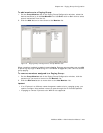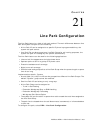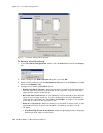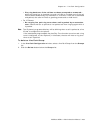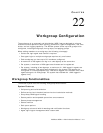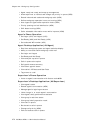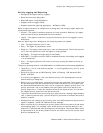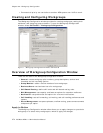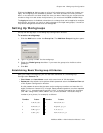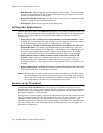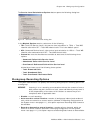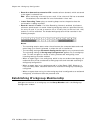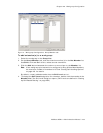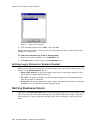Chapter 22: Workgroup Configuration
AltiWare ACM 5.1 Administration Manual 273
Activity Logging and Reporting
• Workgroup and agent activity logging
• Detail and summary data table
• Basic WG report using CDR Search
• Support external logger (ACM)
• Support advanced reporting application - AltiReport (ACM)
When an agent extension is configured to a workgroup, the following agent states are
tracked and reported:
• Unstaff – The agent’s extension becomes a virtual extension. Basically, this agent
does not have a phone associated with the extension.
• Logout – The agent’s extension is a physical extension but is not logged in to any
workgroup.
After an agent logs into a workgroup, the following states are tracked:
• Idle – The agent’s phone is not in use.
• Busy – The agent is connected to a call.
• Wrap-up – The agent enters wrap-up or inter-call delay period. Even if the phone is
not in use, the system will mark the agent in wrap-up state.
• Not Ready – The agent changes state to Not Ready.
• DND/FWD – The agent turned on DND or enabled extension forwarding while logged
in to a workgroup.
• Error – The agent’s phone is off hook for too long, causing the phone to enter an
error state.
The priority queuing feature in the ACM edition of AltiWare has the following capabilities:
• Tag priority (1-9) to a call entering system. “1” is the highest priority and “9” is the
lowest priority.
• Call priority can be set at DNIS Routing, Caller ID Routing, IVR, Advanced Call
Router, and SDK.
• If no priority is tagged to a call, the default priority 5 will be assigned to the call
before entering a workgroup.
• When a call is in a WG queue, two queue times will be generated. Total queue time
will be calculated from the moment the call enters the queue. Priority queue time
will be calculated based on the time a call is in queue at a specific priority level. If a
priority promotion rule is not enabled, the total queue time will be equal to the
priority queue time. If there are multiple calls with the same priority, the call with
the longest priority queue time will be served first.
• To prevent calls with lower priority staying in queue forever, causing a high abandon
rate, or lowering service level, you can set priority promotion to enhance the caller’s
position in queue.
• AltiSupervisor can change a call’s priority level if the WG’s supervisor queue control
option is enabled. (Allow Call Redirect/Priority Change)
• When a call’s priority is changed, its priority queue time will be reset to 0 and starts
accumulating again. For example, caller A with priority 3 has been waiting in the
queue for 15 minutes and caller B with priority 2 waiting for 10 minutes. When caller
A is promoted to 2, the Priority Queue Time for the caller A is set to 0 and the caller
B will be answered first.



